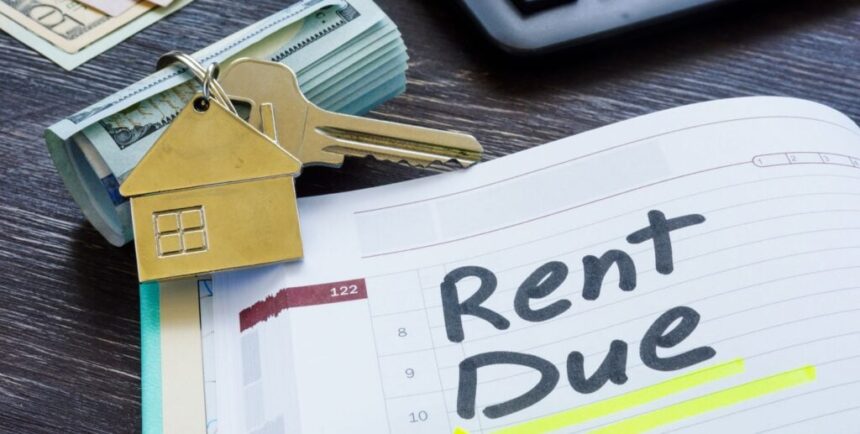As a rental property owner, there’s no better feeling than a tenant signing a lease. This puts you on track to generate a positive return on investment (ROI).
Unfortunately, things don’t always work out as planned. For example, a tenant not paying rent can turn your profit upside down.
Should you find yourself in this situation, there are several key steps you must take.
Understanding Your Rights and Responsibilities
When you face a tenant not paying rent, it’s essential to understand your legal rights and obligations.
Begin by reviewing local landlord-tenant laws, as these will guide your actions and help ensure you proceed legally. Generally, you’re required to send a formal notice to your tenant, detailing the rent amount due and setting a clear deadline for payment.
If the tenant does not meet the deadline, your rights typically allow you to initiate eviction proceedings. However, remember your obligation to act fairly. It’s wise to consider negotiating payment plans or exploring other solutions that could help the tenant catch up on rent before moving forward with eviction.
Effective Communication
The way you communicate with your tenant can impact what happens down the road. Here are some steps you can take.
??Step 1: Have a plan
Always start with a written plan. This will help you avoid making impulsive decisions and ensure you handle rental issues consistently and effectively. Understand your local landlord-tenant laws thoroughly, as these will dictate the procedures you must follow.
Step 2: Empathize
Before taking any concrete actions, engage with your tenant. Listen to their situation, and show understanding. Maintaining a good relationship can lead to more cooperative solutions.
Step 3: Explain that rent is still due
Make it clear to your tenant that despite the circumstances, rent payments are still legally due. Communicate any potential consequences of nonpayment, such as late fees or eviction. Do this respectfully and without any gray area.
Give Your Tenant Options
In a perfect world, open communication would result in your tenant paying what’s due and never missing a future payment. However, this isn’t likely. After all, your tenant missed payment(s) for a reason.
Upon clarifying that rent remains due, assist your tenant in exploring various payment options.
For immediate solutions, suggest that tenants borrow money from relatives or use a credit card for rent payments. To facilitate credit card payments, consider absorbing associated transaction fees and set up a rent collection system through services like Venmo, PayPal, Buildium, AppFolio, or Cozy. This approach helps tenants to flexibly manage their financial obligations.
Another idea to consider is an emergency rent deferral plan (ERDP). Only bring this to light if your tenant fails to pay rent and has exhausted all other options. Tip: This step should not be openly advertised from the start, as it might influence tenants to prioritize other bills.
After considering these options, you might also offer a “partial payment agreement.” This agreement allows your tenant to pay a portion of the rent that is due immediately, with a plan to gradually pay off the remaining balance over a specified period. This method can be especially helpful if your tenant is experiencing temporary financial difficulties but expects to recover financially soon.
With this approach, outline clear terms for how much is to be paid initially, the schedule for the remaining payments, and any potential consequences if the agreement is not honored. This plan should be documented in writing and signed by both parties to ensure mutual understanding and commitment. This strategy helps maintain a steady cash flow, albeit reduced, and sustains the landlord-tenant relationship during challenging times.
Legal Actions and Considerations
When dealing with unpaid rent and considering eviction or other legal actions, it’s essential to follow a structured legal process. This allows you to remain compliant with the law while safeguarding your property interests. Here’s a general guide to follow.
Review the lease agreement
Before taking any action, review the terms of the lease agreement. It should include specific provisions regarding nonpayment of rent and the consequences thereof. This will help you determine the legal grounds for any actions you may take.
Send a formal notice
Typically, the first step in the legal process is to send a formal notice to the tenant. This notice should detail the amount of rent overdue and the deadline by which it must be paid, usually provided for in the lease or as dictated by local laws.
Wait for the response period
After sending the notice, allow the tenant a legal response period, which varies by jurisdiction.
File for eviction
If the tenant fails to pay the overdue rent within the stipulated period, you can proceed to file an eviction lawsuit. This step involves submitting the necessary paperwork to a local court and then waiting for the court to schedule a hearing.
Attend the court hearing
During the eviction hearing, both the landlord and tenant have the opportunity to present their case. Bring all relevant documentation, including the lease agreement, the overdue rent notices sent to the tenant, and any communication between the landlord and tenant.
Court judgment and eviction process
If the court rules in favor of the landlord, it will issue an order of eviction. Local law enforcement will typically carry out the eviction, ensuring that the tenant vacates the property.
Consider alternative dispute resolution
Before reaching this stage, consider whether mediation or arbitration could work. These methods involve neutral third parties and can often resolve disputes without the need for a court case.
Consult legal counsel
Throughout this process, especially if the situation is complex or the tenant contests the eviction, consulting with a qualified attorney can provide guidance tailored to the specific circumstances and local laws.
Prevention Is Key
Preventing issues with unpaid rent begins with taking proactive steps before a tenant even moves in. Here are some effective preventive measures:
- Thorough tenant screening: Conduct a comprehensive screening process that includes credit checks, employment verification, and references from previous landlords. This helps ensure potential tenants have a history of financial responsibility and reliability.
- Clear lease terms: Draft a lease agreement with explicit terms regarding payment deadlines, late fees, and consequences of nonpayment. Make sure these terms are discussed and understood by the tenant before they sign the lease.
- Regular communication: Maintain open lines of communication with your tenants. This can help you identify and address potential payment issues proactively.
- Educate tenants: At the beginning of their tenancy, provide tenants with information on how and when to pay rent, as well as whom to contact if they encounter financial difficulties.
Implementing these preventive measures can reduce the risk of rent-related issues.
Final Thoughts
Managing rental properties effectively requires a combination of firmness and flexibility. You should always be well informed about the legalities of property management, prepared with a plan, and ready to communicate effectively with your tenants. By proactively establishing and maintaining clear expectations, you can minimize the frequency and impact of unpaid rent, thus preserving your investment and fostering positive relationships with your tenants.
Elevate your property management business: A fresh take on managing properties for investor-landlords who want to keep it simple.
In The Self-Managing Landlord, discover the secrets of efficient property management, tenant screening and onboarding, and scaling your business—all to help you break free from the 9-5 grind and create lasting wealth through real estate.
Note By BiggerPockets: These are opinions written by the author and do not necessarily represent the opinions of BiggerPockets.









